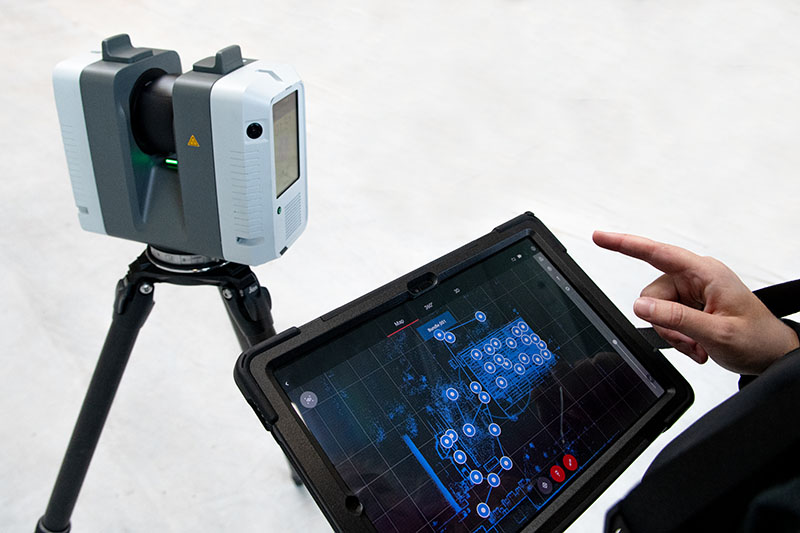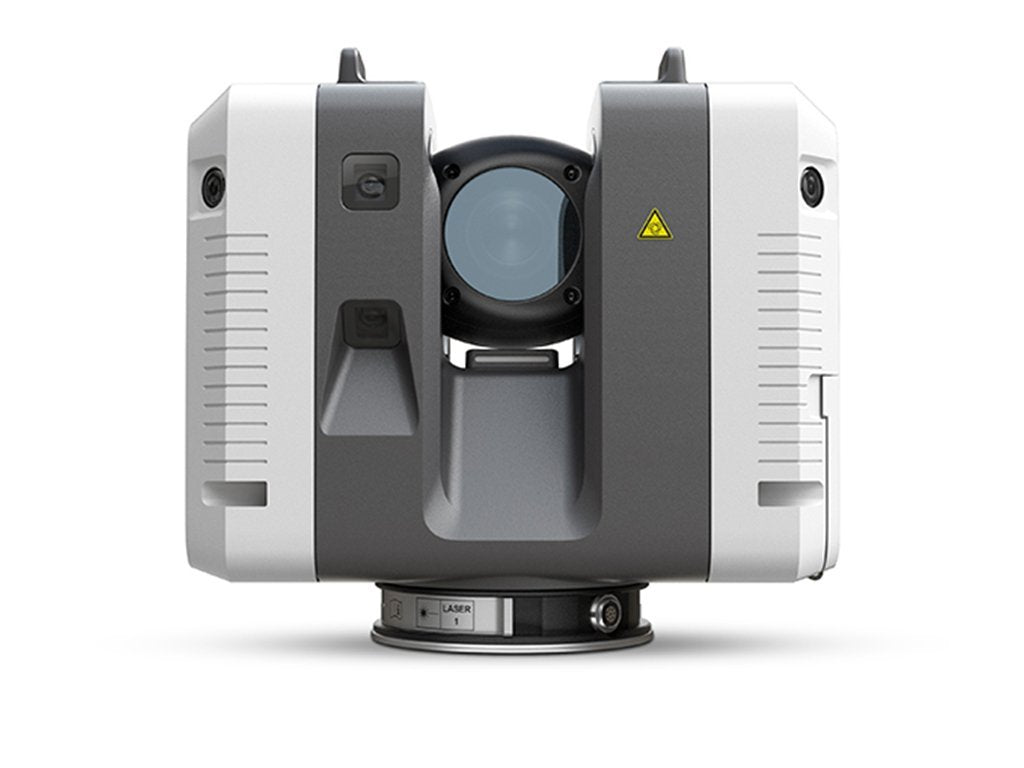A Builder’s Guide to Understanding 3D Scanning Uses
Wiki Article
Discovering the Applications of 3D Laser Scanning in Archaeology and Cultural Heritage Conservation
The assimilation of 3D laser scanning technology in archaeology and social heritage preservation marks a considerable advancement in exactly how historical websites and artefacts are documented and examined. This non-invasive method provides accurate spatial data, disclosing detailed information that were formerly tough to catch. As the applications of this innovation remain to advance, different ramifications for preservation, documents, and education and learning emerge, inviting additional expedition into its transformative impact on the field.Understanding 3D Laser Scanning Technology
3D laser scanning innovation has actually transformed the area of archaeology by supplying in-depth and exact spatial data. This sophisticated modern technology employs laser light beams to record numerous information factors from a things or site, producing a highly exact three-dimensional representation (3D Scanning). The resulting factor clouds can expose detailed information of historical sites, frameworks, and artefacts that may be unseen to the nude eyeUtilizing this modern technology, archaeologists can record the precise dimensions, shapes, and positions of things with unprecedented accuracy. This approach minimizes the threat of human error and removes the need for comprehensive hands-on measurements. Moreover, the data accumulated can be assessed and shared easily, facilitating collaboration amongst scientists. By incorporating 3D laser scanning with GIS and other electronic tools, archaeologists boost their ability to imagine and translate historical contexts, leading to deeper understandings right into ancient societies and environments.
Enhancing Archaeological Documentation
3D laser scanning substantially enhances archaeological documentation with its capacity to create exact website maps. This modern technology facilitates comprehensive artefact evaluation, giving understandings that traditional techniques might forget. In addition, it assures the conservation of contextual data, which is important for recognizing the relationships within historical sites.Accurate Site Mapping
While standard mapping methods usually battle with catching the detailed details of historical sites, progressed laser scanning technology offers an advanced strategy to accurate site mapping. This approach makes it possible for archaeologists to develop extremely detailed and precise three-dimensional depictions of websites, showcasing topographical variations and structural features with exceptional fidelity. The capability to capture millions of data factors in an issue of mins permits thorough paperwork, which can be conveniently updated and shared amongst scientists. Furthermore, laser scanning promotes the measurement of complex geometries that would be tough to analyze using standard tools. Consequently, this innovation enhances the precision of website maps, adding substantially to the conservation and understanding of cultural heritage sources.Comprehensive Artifact Evaluation
Laser scanning modern technology considerably improves the analysis of archaeological artifacts, supplying researchers with unprecedented information and accuracy. This technique records detailed surface area appearances, dimensions, and features that typical documentation methods may overlook. By producing high-resolution 3D designs, scholars can very closely examine artifacts without the risk of damages intrinsic in physical handling. This precision enables better comparative research studies, enabling professionals to determine manufacturing methods, stylistic variations, and prospective cultural relevance. The ability to control and visualize data in three dimensions facilitates a deeper understanding of artefact capability and use. Generally, laser scanning promotes a more detailed method to historical documentation, ensuring that necessary information regarding artifacts is maintained for future study and education and learning.Preservation of Contextual Information
Maintaining contextual information is crucial for enhancing archaeological documentation, as it assures that findings are comprehended within their original environmental and cultural frameworks. 3D laser scanning modern technology greatly contributes to this conservation initiative by recording comprehensive spatial connections among artifacts, frameworks, and their atmospheres. By generating specific 3D designs, excavators can record the specific areas and alignments of things sitting, assisting in a thorough understanding of their context. This modern technology enables researchers to review and assess websites long after excavation, preserving the integrity of contextual information. Additionally, digital documents developed through scanning can be shared around the world, cultivating joint research study and public engagement. Eventually, preserving contextual data with 3D laser scanning enhances archaeological stories and promotes a more profound recognition of cultural heritage.Conservation of Cultural Heritage Sites
As advancements in technology remain to evolve, the preservation of social heritage websites has ended up being increasingly dependent on cutting-edge techniques such as 3D laser scanning. This innovation allows for the detailed paperwork of structures, artifacts, and landscapes, capturing their specific dimensions and spatial partnerships in a non-invasive fashion. By creating high-resolution 3D designs, researchers can keep an eye on and evaluate deterioration patterns, making it possible for proactive conservation strategies.Additionally, 3D laser scanning promotes the sharing of detailed website data with the international area, advertising partnership among excavators, historians, and guardians. These designs offer as vital sources for education and learning and public engagement, elevating awareness of cultural heritage concerns. Additionally, the electronic documents produced can guard against loss as a result of environmental elements, vandalism, or overlook. On the whole, 3D laser scanning represents a transformative strategy to the preservation of cultural heritage, making certain that these websites can be examined and appreciated by future generations.

Remediation and Reconstruction Efforts
The in-depth documents attained through 3D laser scanning plays a considerable function in remediation and restoration efforts within archaeology. This technology gives exact dimensions and high-resolution imagery, enabling precise electronic models of artifacts and structures. These models function as necessary recommendations during remediation processes, making it possible for archaeologists to picture the original style and make notified decisions regarding materials and methods needed for repair work.3D laser scanning facilitates the restoration of harmed or lost elements by developing detailed reproductions. This process help in making sure that restorations preserve historical integrity while also enabling ingenious approaches to bring back sites. The capacity to evaluate wear patterns and architectural weaknesses via checked data enhances understanding of a website's historical context and its use gradually. 3D laser scanning not only preserves the physical facets of cultural heritage however also improves the story of background, guiding future remediation endeavors.
Educational and Research Study Opportunities
The integration of 3D laser scanning in archaeology opens considerable educational and study possibilities. Academic collaborations can improve the understanding of ancient websites, while specialized training workshops outfit experts with vital abilities for utilizing this innovation. With each other, these campaigns cultivate a richer interaction with historical practices and techniques.Academic Collaborations in Archaeology
Collective efforts special info in archaeology have actually ended up being significantly necessary for progressing both instructional and study chances. By promoting collaborations among universities, research organizations, and cultural heritage companies, these cooperations assist in the exchange of expertise and sources, enhancing the quality of historical researches. Joint jobs commonly leverage varied expertise, enabling cutting-edge techniques and complete evaluations, especially in the application of modern technologies like 3D laser scanning. Such partnerships also advertise interdisciplinary techniques, engaging fields such as conservation, background, and location science. Furthermore, scholastic collaborations typically result in the development of brand-new curricula and training programs, preparing the future generation of archaeologists to properly use sophisticated innovations in their work. Inevitably, these alliances add to the preservation and understanding of social heritage.Educating Workshops for Specialists
Educating workshops for professionals in archaeology are progressively vital for boosting abilities in the application of innovative technologies such as 3D laser scanning. These workshops supply individuals with hands-on experience in using innovative tools and software application, cultivating a much deeper understanding of information capture and analysis processes. Experts can discover to develop precise electronic models of historical sites, which markedly help in documentation and preservation initiatives. Additionally, these training sessions often include conversations on finest methods and instance researches, promoting understanding exchange among individuals. By purchasing constant education, experts can stay updated on advancing modern technologies, ultimately boosting the performance of their research study and social heritage preservation initiatives. This dedication to skill enhancement is essential for advancing the field of archaeology.Future Trends in 3D Laser Scanning for Archaeology
As improvements in modern technology continue to improve numerous fields, the future of 3D laser scanning in archaeology promises to improve both the precision and performance of website paperwork and evaluation. Arising patterns show an expanding assimilation of expert system and artificial intelligence, helping with automated information handling and interpretation. This advancement will certainly allow archaeologists to evaluate complex datasets a lot more promptly, causing faster understandings right into historical contexts.The integration of drone modern technology with 3D laser scanning is likely to expand, making it possible for comprehensive airborne surveys of archaeological websites that are difficult to accessibility. The increasing affordability of scanning tools will certainly democratize access, equipping smaller sized organizations and independent researchers to utilize these devices properly. In addition, improvements in virtual fact and enhanced truth will enable immersive experiences for public interaction and education and learning, making archaeological searchings for much more easily accessible and interactive. These trends jointly signal a transformative future for archaeology, enhancing conservation efforts and increasing the self-control's outreach.
Often Asked Inquiries
Just How Much Does 3D Laser Scanning Tools Expense?

What Are the Limitations of 3D Laser Scanning?
The limitations of 3D laser scanning include high costs, possible information handling obstacles, level of sensitivity to environmental conditions, and difficulty catching complex details in complicated surfaces, which can influence the accuracy and efficiency of scanned depictions. (3D Scanning)
Can 3D Laser Scanning Be Used Undersea?
Yes, 3D laser scanning can be utilized underwater, but it requires specific devices and strategies to get over obstacles such as water distortion and restricted presence. Successful applications have actually been demonstrated in aquatic archaeology and undersea studies.How much time Does a Scanning Task Normally Take?
A scanning project usually takes anywhere from a few days to several weeks, depending on the complexity and dimension of the location being This Site checked, together with the prep work and post-processing requirements associated with the project.Are There Details Software Needs for Handling 3D Scans?
Yes, particular software application needs for refining 3D scans consist of programs efficient in dealing with large factor clouds, such as Autodesk other Wrap-up, Cyclone, or MeshLab. These tools assist in analysis, visualization, and assimilation right into different applications efficiently.The integration of 3D laser scanning technology in archaeology and social heritage preservation notes a considerable innovation in just how historical sites and artifacts are documented and evaluated. 3D laser scanning innovation has actually revolutionized the field of archaeology by providing thorough and accurate spatial data. As advancements in modern technology proceed to progress, the conservation of social heritage sites has ended up being significantly dependent on ingenious methods such as 3D laser scanning. As developments in modern technology continue to improve different areas, the future of 3D laser scanning in archaeology guarantees to enhance both the precision and efficiency of site documentation and analysis. The assimilation of drone modern technology with 3D laser scanning is most likely to increase, making it possible for thorough airborne surveys of historical sites that are hard to accessibility.
Report this wiki page